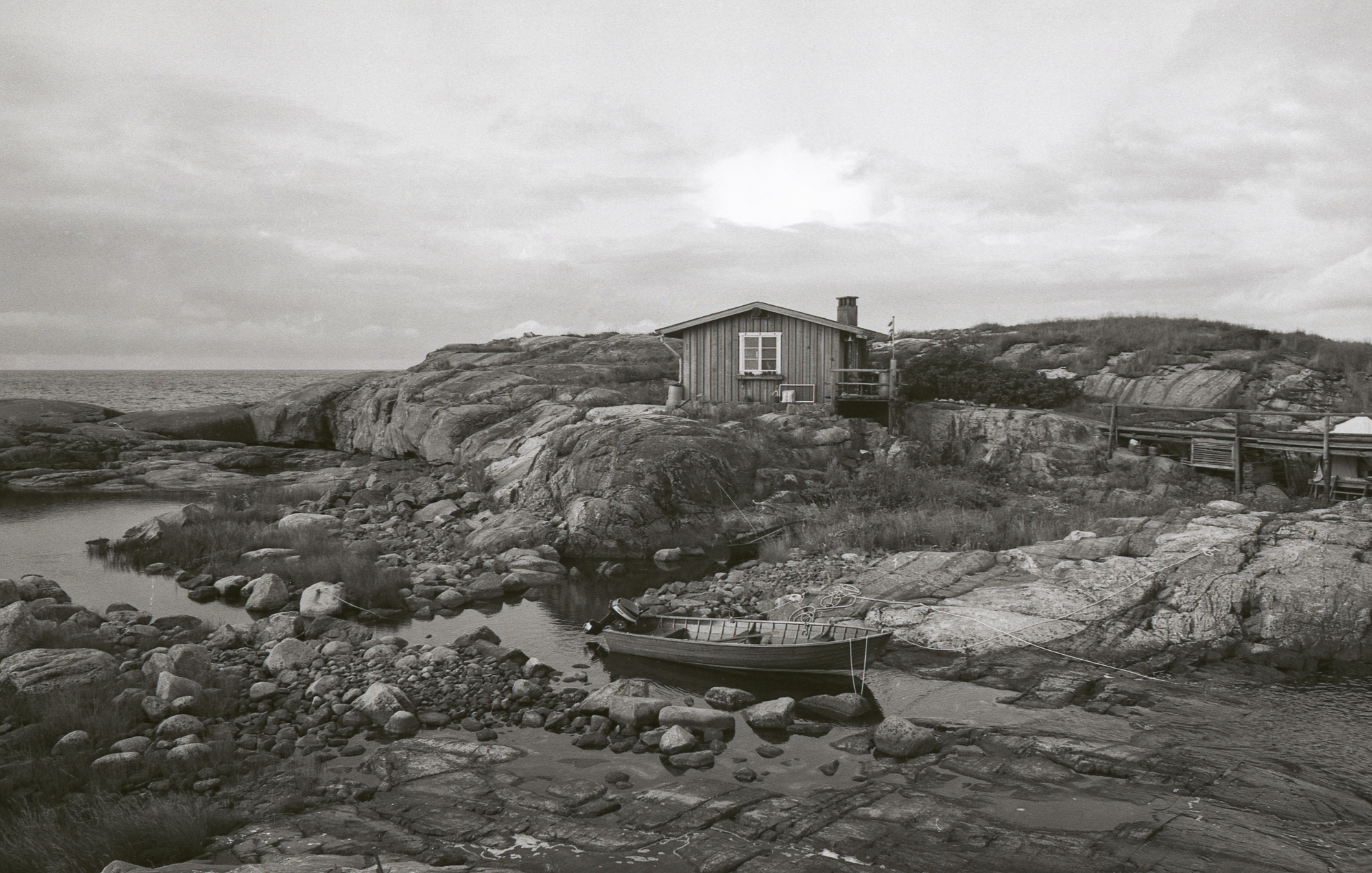The Finland-Swedish Literary Landscape Today
by Tiia Strandén, Finnish Literature Exchange
Picture this: a heterogeneous, widely scattered group of around 300,000 people for whom some 200 works of literature are written annually in a language that is spoken by five per cent of their country’s population.
We are talking about Swedish-language literature in Finland – in other words, Finland-Swedish literature. The previous paragraph may have been a bit heavy on the maths. Suffice it to say that on a per capita basis, there are said to be more works of literature written by Swedish speakers in Finland than anywhere else in the world.

An Introduction to Cool Swedish Titles from Finland
This special issue of Swedish Book Review will introduce you to a selection of recently published gems. It is part of FILI and the Swedish Cultural Foundation in Finland’s investment in raising the profile of Finland-Swedish literature abroad. Finland will be the Guest of Honour at the 2014 Frankfurt Book Fair, the world’s largest and most important industry event for publishing professionals, and FILI is in charge of coordinating Finland’s presence at that event. There isn’t room to include everything: space constraints have obliged us to restrict ourselves to prose fiction, poetry and young adult (YA) literature. The selection is intended to give you a taste, and we hope it will spur you on to read even more and develop a life-long addiction to Finland- Swedish literature. Perhaps you already caught the bug as a child when an adult read Tove Jansson’s Moomin books to you, or maybe you heard about Monika Fagerholm’s The American Girl on Oprah Winfrey’s talk show. Or perhaps you're a dedicated fan of Modernist poetry and know your Edith Södergran inside out?
Finland-Swedish literature encompasses every genre from fiction to picture books, non-fiction and even a graphic novel or two. Poetry has always been like a cherished, gifted child within the Finland-Swedish literary tradition. It has received serious attention and been given plenty of space – perhaps precisely because the Modernist tradition of the 1910s–1920s was so prominent in Finland-Swedish literature and came so early on. Why not explore the work of some of Edith Södergran’s contemporaries as well, such as Elmer Diktonius, Hagar Olsson, Rabbe Enckell, Henry Parland and Gunnar Björling? On today’s poetry scene, some names I would recommend reading include Claes Andersson, Agneta Enckell, Catharina Gripenberg, Ralf Andtbacka, Peter Mickwitz, Heidi von Wright, Eva-Stina Byggmästar and Matilda Södergran. The essay is another genre which is ‘typically’ Finland-Swedish. We have a number of strongly individual voices here, such as Merete Mazzarella, whose witty, erudite and often autobiographical books dissect such wide-ranging topics as infidelity, daughters-in-law, being a senior citizen and the importance of touch.
So, what is Finland-Swedish literature – does it have any distinctive features, anything that sets it apart from Finnish-language literature or Swedish-language literature from Sweden?
It’s impossible to answer this question without making generalisations, but by generalising we can still get fairly close to an answer. The fact is that the Finland-Swedish minority is a minority in solely linguistic terms: there are very few particular ethnic traditions which Finland-Swedes don’t share with the rest of their countrymen. It is the language itself that constitutes the demarcation. And for that reason, linguistic features are an important part of Finland-Swedish literature as well. While Finland-Swedish literature does have a long, highly respected tradition, it forms such a small body of work (in a positive way) that there are no literary trends or schools to adhere to; there is no need for authors to distance themselves from a given tradition or to position themselves within one. In other words, the field is wide open and space is unlimited. Publishers have also traditionally been open-minded and receptive to all sorts of literature, however niche. No one demands that authors write a bestseller, because how ‘best’ could such a book sell? Sure, there are exceptions: one glittering example is Ulla-Lena Lundberg’s novel Is (‘Ice’, 2012), a semi-autobiographical story about the tough yet happy life of a young pastor and his family on a remote, windswept island out in the Åland archipelago in the Baltic Sea. This novel was awarded the 2012 Finlandia Prize, Finland’s most prestigious literary award. The Swedish and Finnish-language editions sold a total of over 130,000 copies in Finland, with foreign rights sold to at least seven countries.
Finland-Swedish literature is not a minority literature, either, in that it does not thematise issues of its minority position. One positive phenomenon on the horizon is the fact that Finland-Swedish literature is increasingly travelling beyond the borders of Finland and even Sweden. The younger generation of writers are highly aware that there is a whole world out there, and their writing is also making it into this bigger arena. It is particularly vital for the literature of a small language to strengthen its legitimacy and avoid literary inbreeding. The authors who are most widely translated punch above their weight in terms of Finland-Swedes’ share of the population. One of the consistently biggest-selling and most widely translated Finland-Swedish authors is Tove Jansson, who wrote novellas and other short prose in addition to her Moomin books. Finland’s perpetual candidate for the Nobel Prize was Bo Carpelan, who passed away in 2011 just after he completed the corrections to the manuscript of what became his final novel, Blad ur höstens arkiv (‘Leaves from Autumn’s Archive’).
Anarchy and Infrastructure
Finland-Swedish literature for children and young adults is a relatively recent genre. It has existed for only slightly over a decade in its current form. In 2001, Tove Applegren’s book Vesta-Linnéa och monstermamman (‘VestaLinnéa and Monster Mom’) was published, serving as the spearhead for a genre which is now flourishing and has a bright future ahead of it.
The question of why there were few Finland-Swedish picture books before that time has a number of possible answers. Perhaps the legacy of Tove Jansson’s Moomin books was so overwhelming that no one dared to enter into competition with them, or people thought the range of picture books from Sweden was sufficient. Perhaps it was also thought to be too expensive to produce picture books for a target audience as small as that represented by Finland-Swedish children. Today, no one disputes that it is important for children to have an opportunity to read books written about their own everyday reality.
Fizzy cheekiness and anarchy invade both the words and the illustrations of Finland-Swedish picture books, and no topic is off limits.
Non-fiction is the genre that is most deeply rooted in Finland-Swedish themes. This is where Finland-Swedish language, identity, key people and places are addressed. The Society of Swedish Literature in Finland (SLS) publishes fine, carefully edited volumes of history, biography, correspondence and anthologies. Finland-Swedish non-fiction publishing output is dominated by history and biographies.
What sort of infrastructure is in place around Finland-Swedish book publishing – and above all, can it really be profitable?
There is only one ‘big’ general publishing house – Schildts & Söderströms (S & S), which employs around 40 people and publishes between 60 and 70 titles per year – as well as ten or so smaller, more specialised or regional publishers. A little over a year ago we had two sizeable publishers, each with a century’s worth of tradition: Schildts and Söderströms engaged in healthy mutual competition, a situation that was particularly beneficial for aspiring young writers. Previously, these publishing houses had had more room for manoeuvre with support on their flanks from their majority owners, two Finland-Swedish foundations dedicated to supporting Swedish-
language literature. In February 2012, these owners took the decision that the two companies should be merged into one publisher, S & S, to survive their financial challenges. The principal shareholders are now four non-profit organisations. It remains to be seen what effect the fact that we now have just one major Finland-Swedish publishing house will have on future literary publishing.
Finland-Swedish literature is in a precarious situation with such a small readership, but if you have a look at a map of the Nordic countries, you’ll see that Sweden is just across the Baltic Sea, and we’ve got nine million potential readers there. You might think Swedish publishers’ hearts would leap at the prospect of ready-written, edited and printed books in their own language just waiting to be sent out to book-hungry purchasers. Of course, that is not how things work: Sweden’s book market exists on its own terms with its own ample output, and there is a finite amount of space for all the books jostling for attention, for advertising space, a shelf – or even better, a table – in bookshops and a well-written review. The better-known names among Finland-Swedish authors such as Monika Fagerholm, Kjell Westö, Tua Forsström and Märta Tikkanen have their own Swedish publishers. Finland-Swedish publishers have to compete with all the rest of the literature from around the world to sell their authors who do not have contracts with Swedish publishing houses.
Finnish-speaking readers have access to a great deal of the Finland-Swedish publishing output, thanks to an active translation policy. S & S publish some of their own works in Finnish, and they also have an arrangement with Teos, a Finnish publisher, to translate and publish a number of Finland-Swedish titles as co-editions. Some authors also have their own contracts with Finnish-language publishers.
After that very brief introduction to Swedish-language literature from Finland, there are plenty of other authors I wish I could have included (such as Irmelin Sandman Lilius, Marianne Alopaeus, Christer Kihlman, Birgitta Boucht, Susanne Ringell, Erik Wahlström, Robert Åsbacka, Anna-Lena Laurén, Hannele Mikaela Taivassalo, Malin Kivelä, Mikaela Strömberg (née Sundström), Katarina Gäddnäs, Sanna Tahvanainen, Lars Huldén, Lars Sund …) but that would probably be too much. You can discover some of them here in Cool Swedish Titles from Finland.

FILI administers and distributes Finnish state grants for books written in Swedish in Finland. In addition to publishing grants, there are grants for the translation of Finnish literature into Swedish and of Finland-Swedish literature into Finnish.
Swedish-speaking authors in Finland can also apply for working grants from the state or from one of the private Finland-Swedish foundations whose aim is to promote the Swedish language in Finland.
For further information, visit:
FILI, Finnish Literature Exchange
